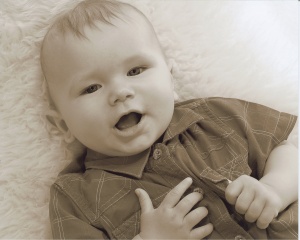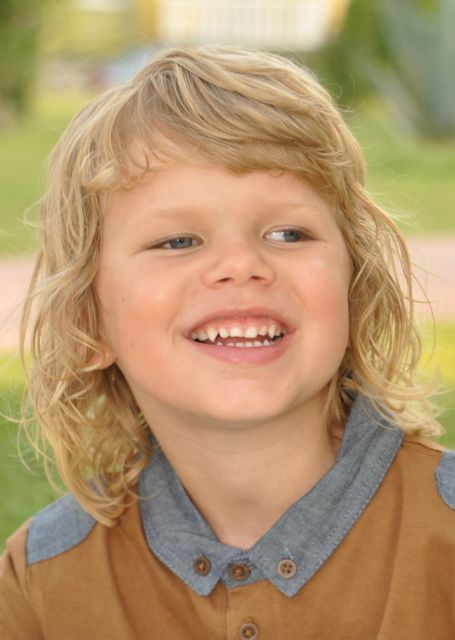Perceptual Development Workshop
APPENDIX ONE
A PERCEPTION BASIS FOR CANE LENGTH CONSIDERATIONS
by Daniel Kish, M.A., M.A., COMS, NOMC
Perceptual Considerations
Perception lies at the center of our ability to manage ourselves in the world. Other processes, such as comprehension, psychology, and mutual social engagement, are critical, but information supports the development and utility of all other neural mechanisms underlying self management. Without information about the world, what is their to comprehend, who is their to engage socially and by what means, and with whom and how do we relate psychologically? We establish and execute intent by drawing meaning from what our senses register. The more information we can access, the more adaptive and more varied is our interaction with the world.
accordingly humans have developed integrated, adaptive brain function that anticipates information through the perceptual process in two principal modes relative to movement - referencing and preview. Referencing refers to recognizing and discriminating elements around us which allows us to set a physical goal toward which movement can be directed, and to maintain orientation with respect to surrounding elements. Preview refers to awareness of elements and their layout in advance of our position. This allows us to direct our course efficiently, safely, and gracefully. Both these modes of gathering information can be divided into near, intermediate, and far.
We use this information about what lies ahead and around us to govern interaction. Without this information, the purposeful flow of movement is disrupted. We struggle to apply other processes to interact with the environment in a manner that is adaptive and mutually meaningful to self and others. Broadly speaking, this usually disrupts the development of grace and confidence to manage ourselves toward achievement.
Tactual Perceptual Extension
Although vision seems to be the default for gathering this information, the latest in neural research suggests that, when vision is disrupted, the brain still anticipates and seeks this information. The mechanisms involved in self management can restore functioning by restoring these modes of information access despite vision loss. For both the blind and sighted brain, it is necessary to foster the brain's capacity to utilize referencing and preview in order to maintain self management capacity. For sighted people, this happens relatively naturally in sighted society. As visual functioning drops, tactual/kinesthetic and auditory channels must be more intensively applied to restore these modes of information access. Here, we discuss tactual/kinesthetic means of restoring near point access through a conductive, haptic, perceptual extension - the long cane.
My long experience as both cane user and teacher with a background in perception has brought me to regard the cane, not so much as a tool for probing or shielding, but as an integrated extension of perception. It should access information naturally to allow an unconscious flow of movement without conscious need to draw upon or apply a matrix of skills or techniques. We hardly think about using our hands to read Braille or put on our clothes, or our eyes to walk or catch a ball. Likewise, the cane should integrate seamlessly into the perceptual process. I believe the brain expects this. For this to happen, application of the cane should be fostered in much the same way that the application of other senses is fostered, through a developmental process of supported discovery. To facilitate this, we should look at the characteristics of the cane that most allow it to tap into and engage perceptual access according to what is native to the nervous system. Knowing that the nervous
system expects to reference and preview, what characteristics of the cane best facilitate this?
A combination of biomechanical and perceptual approaches is prudent, since the biomechanics of our bodies is governed by how we process what we perceive. Modern knowledge of human perception, neurology, and biomechanics across the lifespan were not available to the father's of the long cane. Consequently, the traditional approach to determining cane length was rooted in the biomechanics of adults with little awareness of perception or the biomechanics of children. There is now much known in these areas, but little that pertains to taction guided movement. So, I combine this knowledge with professional and personal experience to provide a starting point to address these issues.
Observations and Reflections
My own cane training around age 12 occurred pretty much according to traditional precepts, which included mid sternum length. My cane skills were considered exemplary by traditional standards, and I found no reason to question this approach.
During my thesis project in my mid 20's, for which I worked with 24 totally blind children, a long time instructor was orienting several of these students to their middle school campus. He quickly replaced their canes of sternum length with forehead length - explaining that increasing the length by about 6 inches generally helped remediate poor cane skills very quickly. I was politely sceptical.
Later, when my cane broke, an acquaintance convinced me to try a nose length replacement. I politely agreed. I hated it at first, because it felt heavy and awkward while my perceptual system tuned to the extended length, much like someone with new glasses. After a few days, I found that my travel took on a greater ease and comfort of rhythm, even faster speed, and fewer unpleasant physical encounters. After some adjustments, I found that chin length seemed to work best for me.
As I began instructing, I noticed preschoolers often preferred to use my cane, taking it in both hands and holding it before them with confident daring. While I conducted most of their instruction with canes of more manageable length, I noted that the increased length did seem to facilitate their understanding of the cane's purpose, as well as a natural comfort in using it. I never found the need for "pre-cane" devices.
One day, a Mexican family came to me with their 6 year old, non-English speaking son who had refused the cane despite their insistence. While we spoke, he discovered my cane and began walking around my office with it. Cautioning his parents not to stop him, I allowed him to do what should come naturally to children - discover. In short order he made his way out the door, striding quickly along the walkway with relaxed poise. His parents were dumbfounded as we hurried along behind him, insisting they'd never seen him do this. Upon approaching the sounds of children playing, he happily explored the playground with this very long cane.
On a more recent occasion, it was brought to my attention that an older gentleman was walking with a shuffling gait and slightly stooped posture. I handed him my cane. Immediately his speed increased and his posture straightened. Though he and I had talked about many things, he couldn't thank me enough for this one simple suggestion.
Not only are my own experiences replete with similar examples, but I hear them commonly from others. One woman recently declared that she'd struggled with one deaf-blind and one autistic child. Their canes were used for anything but perception. After providing longer canes to them, she reported that their cane skills revolutionized in a few days.
Findings
After working with nearly a-thousand students of nearly every type and background, I believe that the reflex to reach physically into the environment is nearly as innate as hand to mouth. Early man, unable to conjure artificial light, probably used sticks naturally to improve their reach and balance. I also believe that the referencing and preview systems are expecting to access near point information at a certain distance. If this requirement isn't met, these systems may not be triggered to engage properly. For now, I can only guess at this magic number, but experience suggests that sternum length seems to under-cut this number for most students, especially children.
Children have the same referencing and preview needs as adults for ambulation. Yet, their biomechanical properties are not the same with respect to cane use. Due to their small size, measuring cane length to the sternum may afford half the referencing and preview capacity as for adults. Though children take shorter strides, their strides are much more frequent and hurried, keeping their walking speed close to that adults.
I have consistently found that children up to about 6 are most engaged by canes their own height. After 7 or so, it often seems helpful to reduce cane length to about the nose. As they pass through puberty, about chin length seems optimal.
Additional Considerations
Obviously, many factors may influence the student's decision. What may be natural for the brain will vary between people and circumstances. Cane weight, length, style of use, environment, and student physiology must all be balanced. Here are a few points:
- Heavier cane construction, especially those with heavy tips may cause a longer cane to feel quite cumbersome. In general, I recommend canes of lighter construction and smaller tips.
- Longer canes can become awkward in congested environments. Congested technique usually resolves this, and I find children accommodate this quite well.
- Concerns are sometimes raised about the cane getting in people's way. At the risk of sounding militant, who's getting in whose way? I regard perception as a sovereign right, not to be infringed upon because it may seem inconvenient. I have found that blind people and their sighted peers, children and adults alike, learn to accommodate the longer cane when it is respectfully regarded as a part of natural function. Blind students learn to consider the presence of their cane with respect to others, and sighted people learn to respect that presence. If these concerns persist in a given setting, some education provided to peers should resolve the matter.




